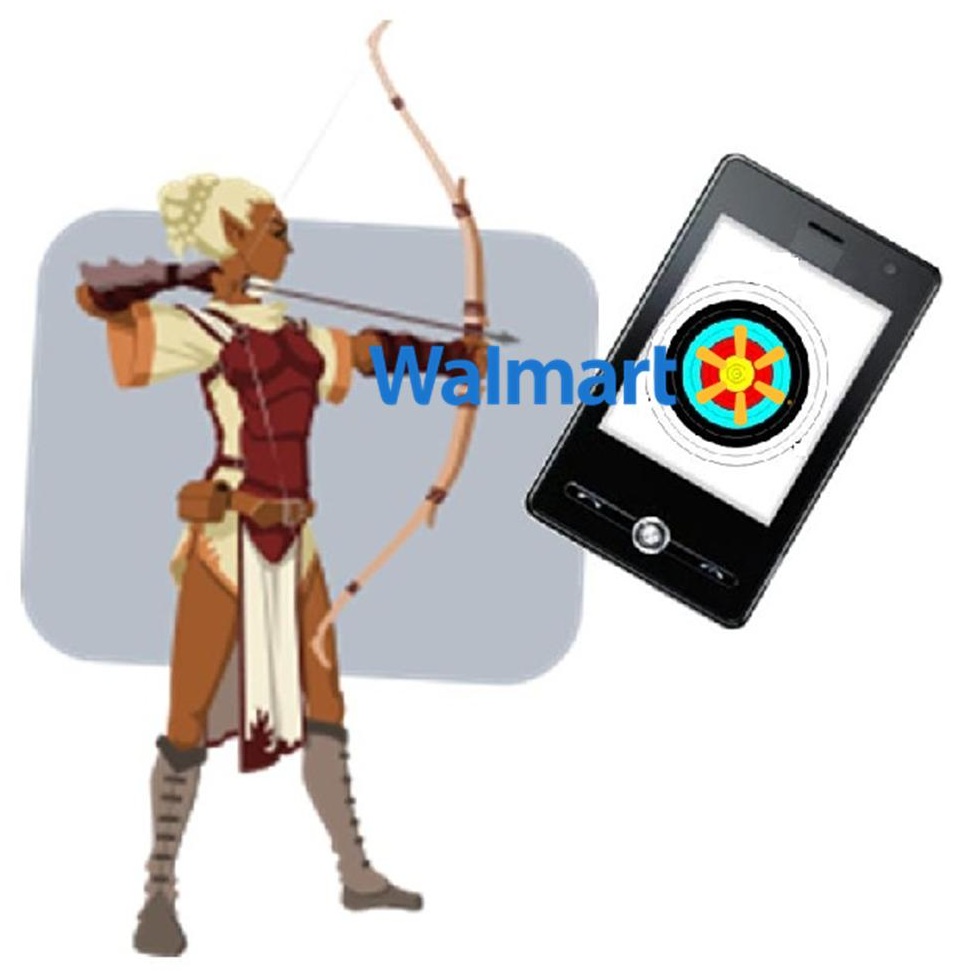This massive retailer is seeking to expand its reach by taking massive steps into mobile.
The largest retailer in the world, Walmart, has announced that it is attempting to use m-commerce technology to enhance the shopping experience that it provides within its stores while it continues to focus on pleasing its customers.
This, according to the company’s global head of mobile, Gibu Thomas, in a prepared statement.
By accomplishing this goal and maximizing the potential that m-commerce has to offer the retailer, Walmart believes that it will generate an additional $689 billion in sales that have been influenced by mobile, by 2016. The company is coming to recognize that the future of retail is about returning to the past values for a personalized experience.
It feels that m-commerce will help it to provide an experience that is customized to each consumer.
 According to Thomas, “The future of retailing is the history of retailing — a personalized interactive experience for every customer delivered from a smartphone.” He added that m-commerce tools will be used for addressing the needs of consumers above all else, particularly in terms of saving them time and money.
According to Thomas, “The future of retailing is the history of retailing — a personalized interactive experience for every customer delivered from a smartphone.” He added that m-commerce tools will be used for addressing the needs of consumers above all else, particularly in terms of saving them time and money.
Thomas added that “It doesn’t always have to be the cutting edge whizz-bang feature to get the kind of impact you want for your customer. It could be simple things that fit their everyday needs.” As 90 percent of the purchases made at Walmart are still occurring within its brick and mortar locations – despite heavy attempts to push its online shopping experience – it is clear that it is the in store experience that holds the greatest opportunity.
Therefore, Walmart is seeking to use m-commerce tools that are “indispensable” to customers for its in store shopping, as opposed to necessarily trying to drive online sales. That said, it is Walmart’s believe, said Thomas, that it will generate $27 billion in revenues over mobile by 2016.
He explained that the company feels that the best way to introduce m-commerce tools to customers is by adding new capabilities into tools that have already been in existence and that have already been adopted by the majority of consumers, such as creating a shopping list.
When compared to smartphones, these devices are being used on an increasing basis for shopping.
As consumers become increasingly reliant on their mobile devices for everything from communication to purchasing and payments, data is starting to reveal that it is tablet commerce that is racing forward at the fastest pace within the m-shopping space.
While smartphones are still in the lead, their larger screen cousins are beginning to catch up.
The latest research from MasterCard has shown that there is a great deal of debate regarding the importance of the role of tablet commerce in mobile shopping as a whole. Smartphones are a great deal more common, but purchases aren’t being made as often or in as high a value on them as their bigger mobile counterparts.
Now, a new study is suggesting that tablet commerce may soon virtually replace smartphone shopping.
 Forrester Research has just released a study that suggests that it is tablet commerce that is paving the way to the future and that these devices may replace smartphones when it comes to searching for products and actually purchasing them. Their data showed that 30 percent of American tablet owners use those devices for shopping purposes.
Forrester Research has just released a study that suggests that it is tablet commerce that is paving the way to the future and that these devices may replace smartphones when it comes to searching for products and actually purchasing them. Their data showed that 30 percent of American tablet owners use those devices for shopping purposes.
On the other hand, that same research indicated that only 13 percent of smartphone users have every purchased anything using that mobile device. This indicates that device users favor tablet commerce due to the larger screen size and the features that those machines are able to offer. The bigger screen plays a very important role in the shopping experience because it provides better overall navigation and control, and simply makes pictures and other content easier to see.
The Forrester Research report also predicted the sales in mobile and tablet commerce for this year right through until 2016. According to its forecasts, while smartphones remain in the lead now, tablet commerce will be much more important by the time that the end of its current predictions is reached and $27 billion in sales is achieved overall.
Tablet commerce is expected to have a massive contribution to that total sales figure in the future. Forrester believes that by 2016, 45 percent of mobile shoppers will own these devices.
 According to Thomas, “The future of retailing is the history of retailing — a personalized interactive experience for every customer delivered from a smartphone.” He added that m-commerce tools will be used for addressing the needs of consumers above all else, particularly in terms of saving them time and money.
According to Thomas, “The future of retailing is the history of retailing — a personalized interactive experience for every customer delivered from a smartphone.” He added that m-commerce tools will be used for addressing the needs of consumers above all else, particularly in terms of saving them time and money.
 Forrester Research has just released a study that suggests that it is tablet commerce that is paving the way to the future and that these devices may replace smartphones when it comes to searching for products and actually purchasing them. Their data showed that 30 percent of American tablet owners use those devices for shopping purposes.
Forrester Research has just released a study that suggests that it is tablet commerce that is paving the way to the future and that these devices may replace smartphones when it comes to searching for products and actually purchasing them. Their data showed that 30 percent of American tablet owners use those devices for shopping purposes.